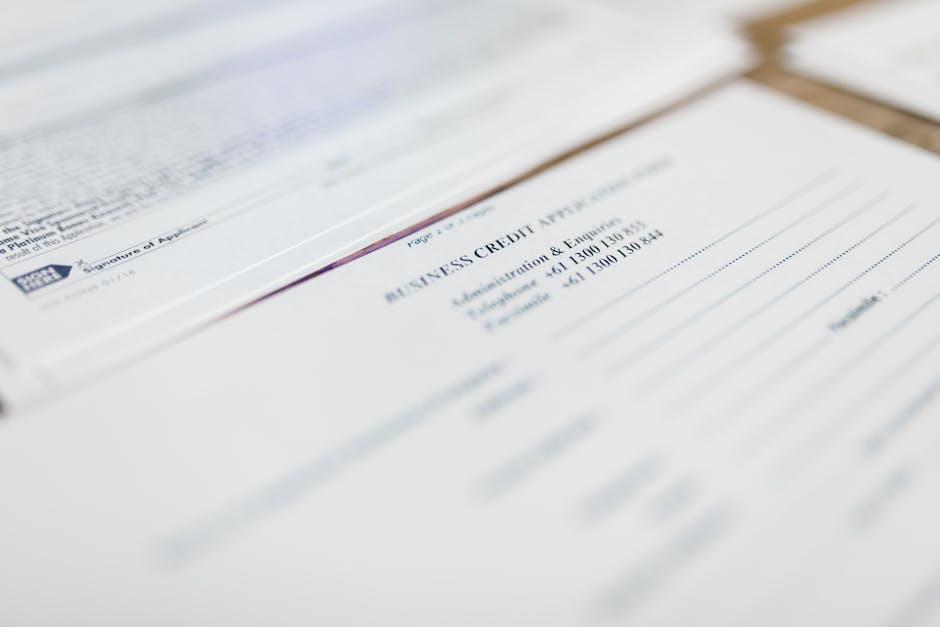Navigating the claims process for disability insurance benefits can often feel like traversing a labyrinth, fraught with complex regulations and intricate paperwork. For many, this process is not just a bureaucratic necessity, but a vital lifeline to financial stability during challenging times. Understanding the nuances of this process is crucial for ensuring that you receive the benefits to which you are entitled. This article aims to demystify the claims process for disability insurance benefits, providing you with a comprehensive guide to effectively manage each step. From gathering essential documentation to communicating with insurance providers, we will equip you with the knowledge and strategies needed to advocate for your rights and secure your financial future.
Navigating the Initial Application: Essential Steps for Success
To successfully embark on your journey through the disability insurance benefits process, it’s crucial to lay a strong foundation from the outset. Begin by gathering all pertinent documentation, such as medical records, employment history, and any relevant correspondence with healthcare providers. This comprehensive preparation will not only streamline your application but also bolster your case when demonstrating the extent of your disability.
Next, pay close attention to the application forms. These documents are your primary means of communication with the insurance provider, so clarity and accuracy are imperative. Ensure that all information is current and meticulously detailed. Utilize resources such as online guides or consultation with a professional to navigate complex sections. Keep in mind the importance of adhering to deadlines, as any delay could significantly impact your claim. By taking these essential steps, you set a solid groundwork for a smoother claims process, increasing the likelihood of a favorable outcome.

Key Documentation: Gathering and Organizing Critical Evidence
When embarking on the journey to secure disability insurance benefits, having a well-structured approach to documentation is paramount. The first step is to identify all necessary documents that substantiate your claim. These typically include:
- Medical Records: Comprehensive and up-to-date medical records from all healthcare providers involved in your treatment.
- Doctor’s Statements: Detailed statements from your physicians outlining the nature and extent of your disability.
- Employment History: Documentation of your employment history, including job descriptions and any accommodations provided by your employer.
- Financial Records: Financial documents that demonstrate the economic impact of your disability, such as tax returns and pay stubs.
Once gathered, organizing these documents systematically is crucial. Create a digital and physical filing system that is easily accessible. Utilize folders and labels for quick reference and ensure all documents are dated and signed where necessary. This meticulous organization not only streamlines the process but also enhances the credibility of your claim, portraying you as a diligent and prepared claimant.

Understanding Denials: Common Reasons and How to Address Them
When navigating the complex landscape of disability insurance benefits, understanding why claims get denied is crucial. Denials can occur for several reasons, and being aware of these can significantly increase the likelihood of a successful claim. Here are some common reasons for denials and strategies to address them:
- Incomplete Documentation: One of the most frequent causes of claim denials is missing or inadequate documentation. Ensure that all medical records, physician statements, and necessary forms are complete and submitted on time. Regularly check for any additional documentation requirements that may arise.
- Lack of Medical Evidence: Insufficient medical evidence to substantiate the disability claim can lead to denials. Work closely with healthcare providers to gather comprehensive medical records and reports that clearly demonstrate the severity and impact of the disability.
- Non-Compliance with Treatment: If the claimant has not followed prescribed treatments or therapy, insurers may deny the claim. It is vital to adhere to treatment plans and document all efforts made to comply, as this shows commitment to recovery.
Addressing these issues proactively can help in building a strong case for your claim. Consider consulting with a disability insurance attorney or advocate if you encounter persistent obstacles or require expert guidance through the process.

Maximizing Your Chances: Expert Tips for a Smooth Claims Process
To ensure a seamless experience in navigating the disability insurance claims process, consider implementing a few strategic approaches. Organization is key. Begin by gathering all necessary documentation such as medical records, employment history, and any relevant correspondence. Create a detailed timeline of events related to your condition, noting important dates like the onset of disability and any treatments received. This preparation will not only facilitate a smoother interaction with your insurer but also strengthen your case.
Communication with your insurer should be clear and consistent. Establish a single point of contact within the company, if possible, to streamline communications. When submitting your claim, provide comprehensive information and promptly respond to any requests for additional documentation. Remember, maintaining a detailed record of all interactions with your insurance company, including dates, times, and the content of conversations, can prove invaluable. Additionally, consider the following expert tips:
- Consult with professionals: Engage with a disability claims consultant or attorney if the process becomes overwhelming.
- Understand your policy: Familiarize yourself with the terms and conditions to avoid unexpected surprises.
- Follow up regularly: Consistent follow-ups can expedite the process and keep your claim top-of-mind for the insurer.

